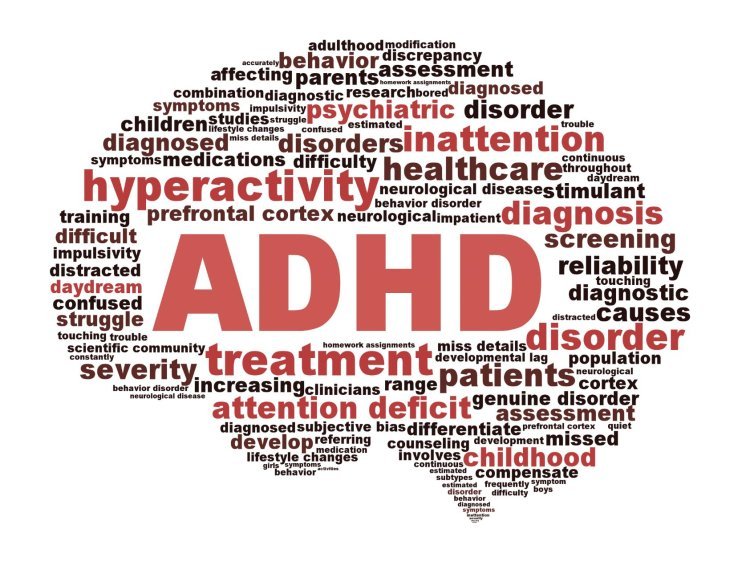ADHD and School
ADHD children sometimes act without thinking, which not only causes issues in the classroom but also makes social interactions challenging.

Ways to control symptoms of ADHD in the classroom
Since each child's brain is affected by ADHD differently, every situation in the classroom can be extremely different. A variety of symptoms can be seen in children with ADHD: some seem to bounce off the walls, some daydream all the time, and others just can't seem to obey rules. You may assist your child in reducing any or all of these kinds of behaviors as a parent. To effectively address the issue, it is critical to comprehend the ways that attention deficit disorder impacts the behavior of various children. To effectively manage your child's ADHD symptoms and help them succeed in school, you and their teacher can adopt a number of relatively simple strategies.
Controlling the tendency to become distracted
Students with symptoms of ADHD frequently miss important classroom information because they are easily distracted by sounds, bystanders, or their own thoughts. When it comes to tasks requiring prolonged mental effort, many kids struggle to maintain focus. Despite giving off the impression that they are paying attention, there is a barrier preventing them from remembering what you are saying. Assisting children who become easily distracted requires physical positioning, more activity, and dividing lengthy work sessions into smaller ones. The ADHD child should be seated away from windows and doors. Pets should be kept in a different room or a corner while the student is at work. Activities that require the child to sit still and those that let them move around the room should be alternated. Whenever feasible, include movement in your lessons. Place essential information in a legible and accessible location for the kid to read and refer to. Remind the pupil of the location of the information. Break up large jobs into smaller ones and give kids lots of pauses.
Cutting back on interruptions
Children with attention deficit disorder frequently talk out of turn because they have trouble managing their impulses. They interrupt people when they are speaking, whether in class or at home. Their violent or simply impolite outbursts could cause social issues as well. Children with ADHD frequently have very fragile self-esteem, so bringing up this issue in front of classmates or family members doesn't solve the problem—in fact, it might make things worse. It's important to correct ADHD children's interruptions carefully in order to preserve their self-esteem, particularly when they're among other people. Create a "secret language" with the ADHD child. You can inform the child that they are interrupting by using tactful gestures or prearranged language. Congratulate the child on having uninterrupted discussions.
Controlling Impulsivity
ADHD children sometimes act without thinking, which not only causes issues in the classroom but also makes social interactions challenging. Children who struggle with impulse control may come across as irrational or violent. Probably the most bothersome sign of ADHD , especially in the classroom, is this one. Behavior plans, swift punishment for transgressions, and a strategy to give ADHD kids a sense of control over their day are all tools for controlling impulsivity.Ensure that the student has a written behavior plan close at hand. It can also be taped to the child's desk or the wall. Apply penalties right away if someone misbehaves. Make sure the youngster understands the specifics of their misbehavior when you explain things to them. Praise positive conduct aloud. When praising a child, be sure to point out exactly what they did well. The daily schedule should be written on the board or a piece of paper, and each task should be crossed off as it is finished. When kids with impulse control issues are aware of what to expect, they can feel more in charge and at ease.
Controlling hyperactivity and fidgeting
Students with ADHD frequently move around a lot. These kids may seem to find it difficult to remain seated. Children diagnosed with ADD/ADHD may exhibit challenging movement patterns, such as kicking, twisting, jumping, and fidgeting. Inventive methods for letting the ADHD youngster move in acceptable ways at appropriate times are part of the strategies used to manage hyperactivity. The child may find it easier to maintain physical calmness throughout work hours if they release their energy in this way. Get kids with ADHD to help you out with errands or tasks, even if it's only across the room to put away the dishes or sharpen pencils. Make sure a child with ADHD never skips recess or physical education classes, and encourage them to play sports or at least run about before and after school. Give the youngster a little toy, stress ball, or other object to play with or squeeze quietly at their seat.
Prioritize time for mobility over screen time.
For many kids with ADHD, following instructions is a characteristic issue. These children may appear to comprehend instructions and may even write them down, but they are unable to carry them out as directed. These pupils occasionally omit steps and submit unfinished work, or they misinterpret an assignment completely and end up doing something else.
Redirecting when needed and breaking down and reinforcing the steps in your instructions are important strategies to help children with ADHD follow instructions. Try giving very brief directions; let the youngster finish one step, then come back to see what further has to be done. If the youngster veers off course, gently remind them and refocus them in a forceful but calm manner. When it's feasible, write instructions on a chalkboard using colored chalk or a bold marker.
What's Your Reaction?










![Wireless Connectivity Software Market Size, Share | Statistics [2032]](https://handyclassified.com/uploads/images/202404/image_100x75_661f3be896033.jpg)



